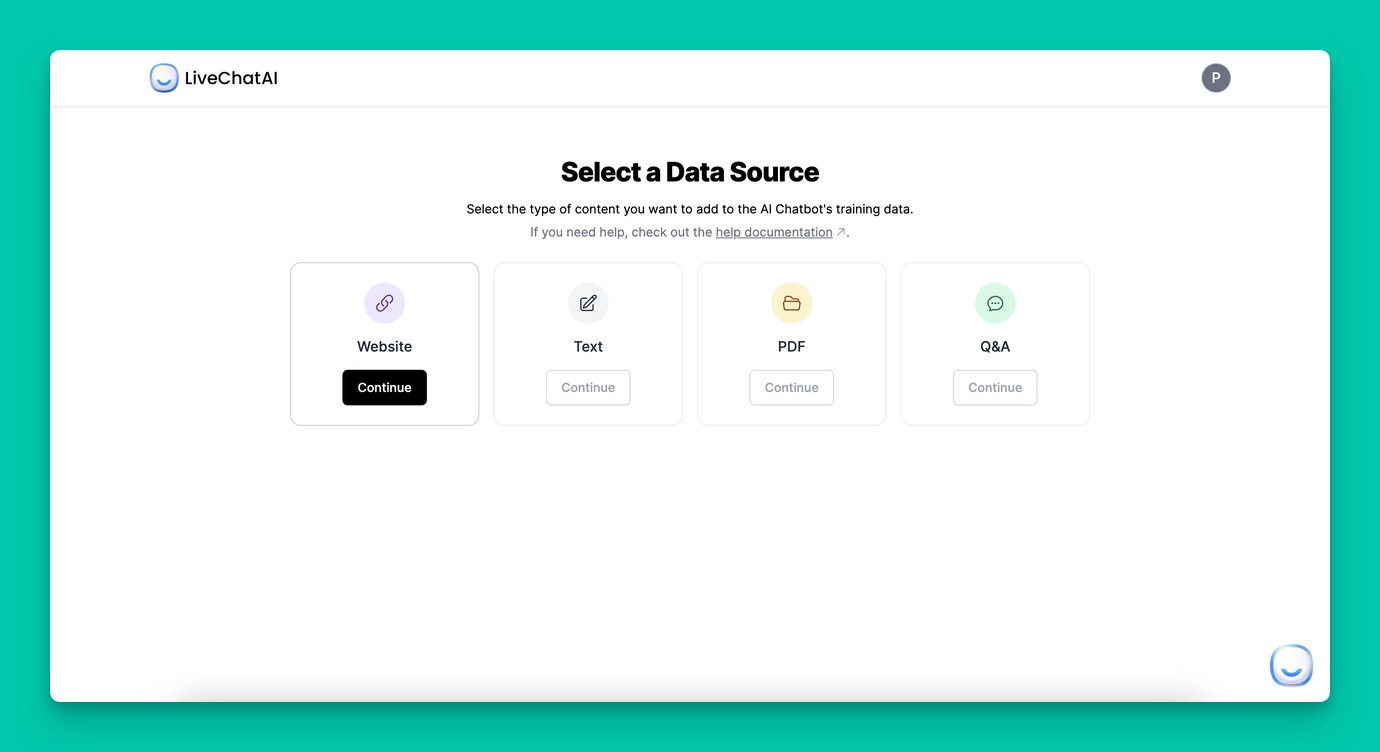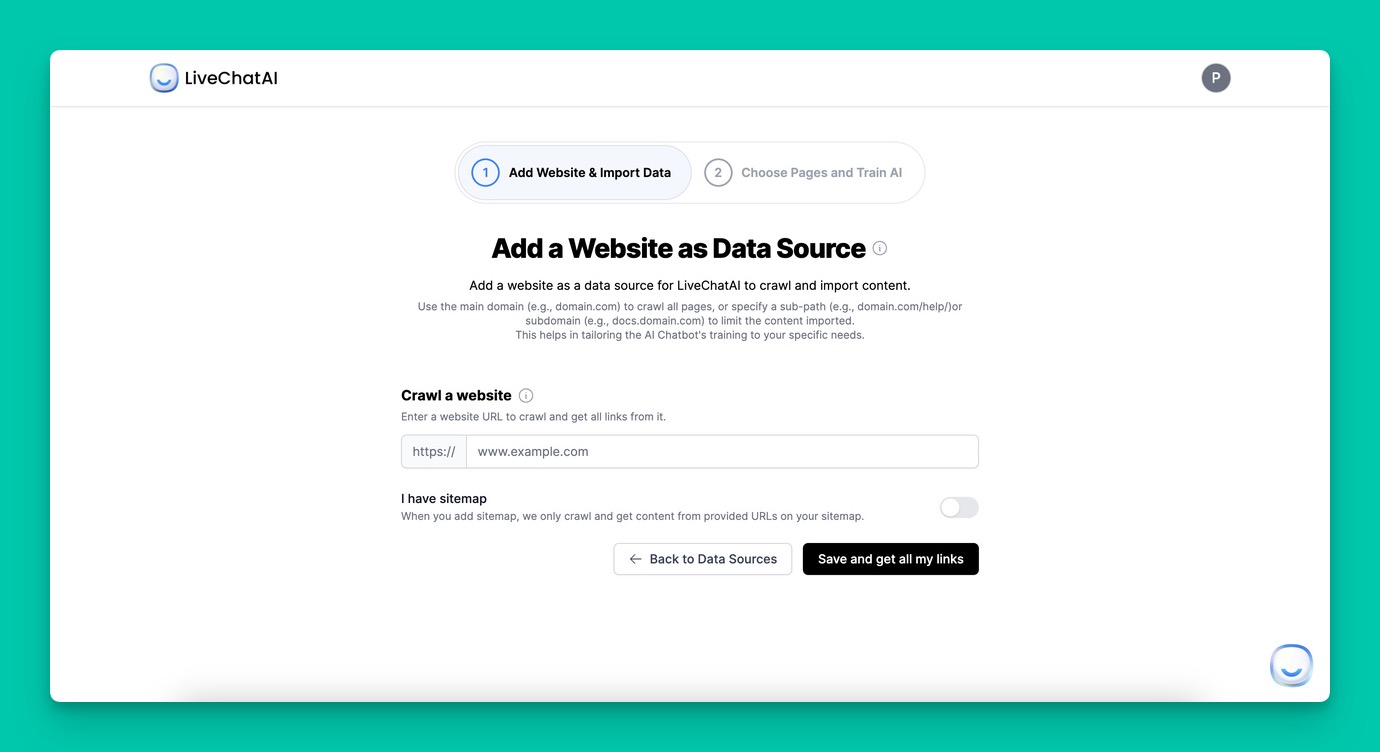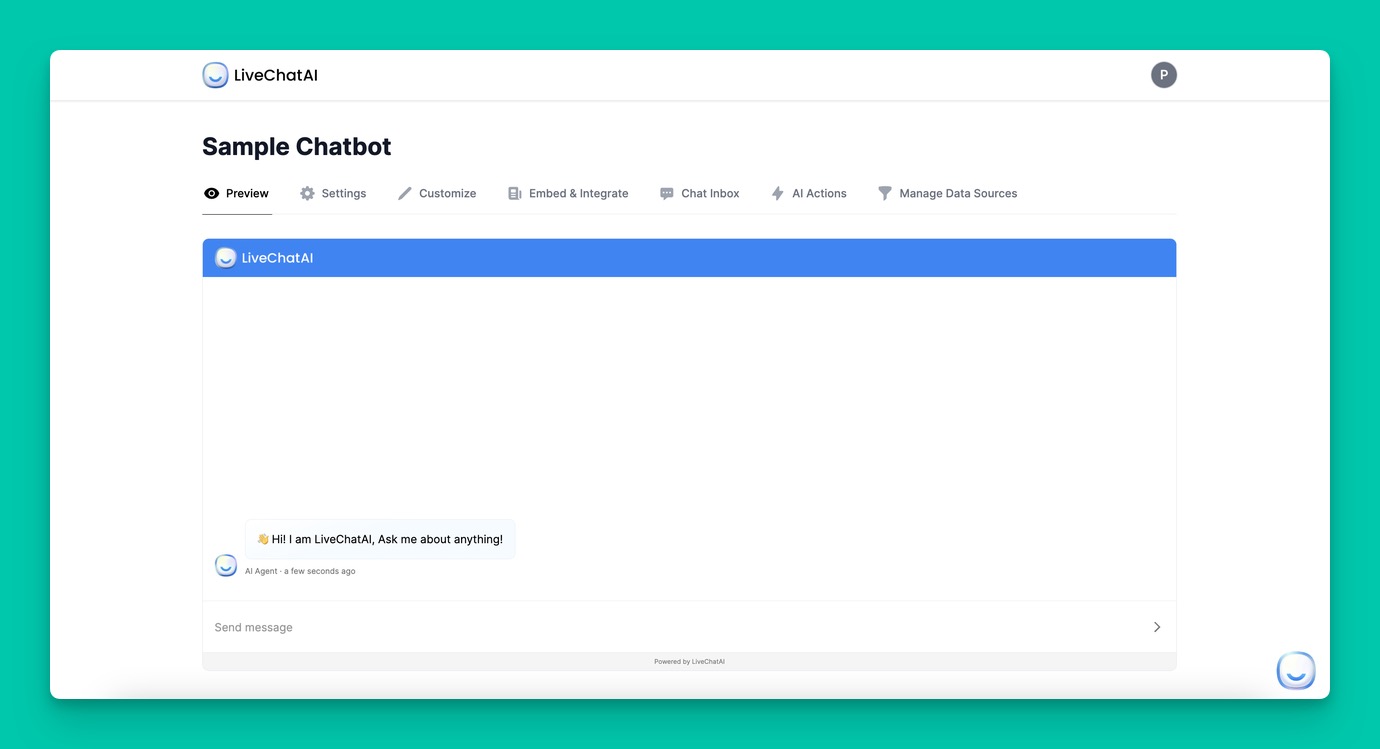
Conversational AI Chatbots- Difference and Best Practices
As a the tech frontier, we centre on conversational AI chatbots, a quantum leap from traditional, rule-bound bots.
By using advanced technologies like NLP and machine learning, these AI chatbots offer engaging and intuitive interactions.
This post discusses the differences between chatbots and highlights how conversational AI chatbots can drive business goals and match user expectations.
What is a Conversational AI Chatbot?
A Conversational AI Chatbot is a highly intuitive and intelligent software programmed to simulate human conversations.
Unlike rule-based chatbots, conversational AI chatbots make use of
- Natural Language Processing (NLP),
- Machine Learning (ML),
- and sometimes, Artificial Intelligence (AI) to understand complex human languages.
This allows them to comprehend, respond to, and learn from interactions they have with users.
These chatbots are designed to provide an enriched and personalized conversational experience, making them ideal for customer service, gathering information, answering queries, processing transactions and much more.

The Benefits of Conversational AI Chatbots
1. Improved Customer Engagement: With their capability to deliver personalized experiences, Conversational AI Chatbots can enhance customer engagement significantly.
2. Seamless 24/7 Support: As they do not require rest or breaks, these chatbots can provide round-the-clock assistance, ensuring customers are not left in the lurch at any time.
3. Cost-Efficiency: Large businesses can greatly reduce customer service costs by deploying chatbots, allowing human agents to focus on more complex customer issues.
4. Advanced Analytics and Insights: With every interaction, AI chatbots learn and gather data. This data can provide businesses with invaluable insights into customer behavior and preferences.
5. Increased Productivity: By taking over routine tasks, AI chatbots free up a company’s human resources, allowing them to focus on more important and complex aspects of the business.
6. Better User Experience: Thanks to their intuitive nature, AI chatbots can use historical data to anticipate user queries and provide accurate, instant responses, thus enhancing the overall user experience.
The Difference between Chatbot & Conversational AI Chatbot
The terms "chatbot" and "conversational AI chatbot" are often used interchangeably, but they denote different levels of sophistication and capabilities in the realm of automated messaging services.
Chatbot
- Rule-Based: Traditional chatbots often operate on a set of predefined rules. They respond to specific commands or keywords identified in the user's input.
- Limited Scope: Their ability to handle queries is confined to the scenarios anticipated by their developers. If a user's request falls outside these predefined scenarios, the chatbot may fail to provide a satisfactory response.
- Simple Interactions: Interactions with rule-based chatbots tend to be transactional and linear, following a scripted pathway without much deviation.
- No Contextual Understanding: These chatbots lack the ability to understand the context of a conversation. Each query is treated independently, without consideration for previous exchanges.
Conversational AI Chatbot
- Natural Language Processing (NLP): Conversational AI chatbots leverage NLP and machine learning to understand, interpret, and generate human-like responses. This allows them to handle a wide range of queries beyond simple keyword recognition.
- Learning Capability: Through machine learning, these chatbots can improve over time, learning from past interactions to enhance their responses and handling of queries.
- Contextual Conversations: They maintain the context of a conversation, allowing for more natural and fluid interactions. This ability enables them to remember past details shared by the user and reference them in future responses.
- Advanced Functionalities: Conversational AI chatbots can integrate with various data sources and APIs to provide dynamic responses, such as retrieving user-specific information or completing transactions.

In summary, while a basic chatbot can automate simple tasks based on predefined rules, a conversational AI chatbot offers a more advanced, dynamic, and personalized user experience, closely mimicking human-like interactions.
This distinction is crucial for businesses and developers to consider when choosing a solution that best fits their needs and the expectations of their end-users.
How Conversational AI Chatbots Work
Conversational AI chatbots represent a sophisticated blend of technologies that enable machines to understand, process, and respond to human language in a way that is both meaningful and contextually relevant.
Here's an overview of how conversational AI chatbots work:
1. Understanding Human Input
- Natural Language Processing (NLP): This is the foundational technology that allows the chatbot to parse and understand human language. NLP breaks down user input into understandable units, analyzing grammar, context, and intent.
- Intent Recognition: The chatbot identifies the user's intent from their input, determining what the user is trying to achieve or know.
2. Processing and Analysis
- Contextual Understanding: Advanced chatbots maintain a context of the conversation, which helps in understanding the flow and relevance of the dialogue. This includes recalling previous interactions within the same session.
- Machine Learning: Over time, the chatbot learns from interactions to improve its understanding and responses. This continuous learning process enhances the bot's accuracy and effectiveness.
3. Generating a Response
- Response Generation: Once the intent and context are understood, the chatbot formulates a response. This can be achieved through various methods, including selecting a predefined response or generating a new response using language generation models.
- Personalization: Some chatbots can tailor responses based on user data, providing a more personalized interaction.

4. Continuous Improvement
- Feedback Loops: Many conversational AI systems incorporate feedback mechanisms that allow them to learn from their successes and mistakes, refining their models for better future responses.
- Human Oversight: In many systems, human supervisors can intervene or review interactions to guide the AI’s learning process, ensuring it stays on track and improves appropriately.
Technologies Behind Conversational AI Chatbots
- NLP and NLU (Natural Language Understanding): These technologies help the bot to not just process language but understand the nuances, including slang, idioms, and other complex language features.
- Dialog Management: Manages the flow of the conversation, ensuring responses are coherent and contextually appropriate.
- Machine Learning and Deep Learning: Algorithms that enable the chatbot to learn from data, improving its performance over time.
Conversational AI chatbots are much more than simple question-answer systems.
They are designed to simulate human-like conversations, providing users with responses that are not only accurate but also contextually relevant, making the interaction as natural and seamless as possible.
This intricate system of technologies working in harmony is what sets conversational AI apart in the realm of automated customer service and engagement tools.
How to Build a Conversational AI Chatbot
Building a conversational AI chatbot involves a series of structured steps, ensuring the chatbot is tailored to your specific needs and capable of providing meaningful interactions.
Here’s a guide on how to construct a conversational AI chatbot:
Step 1: Set Up Your Platform
Begin by creating an account on LiveChatAI to develop and customize your chatbot.

Step 2: Choose Your Data Source
The foundation of a conversational AI is the data it's trained on. Select a data source that best fits the context in which your chatbot will operate:
- Website: Use your website content by providing a URL or sitemap.
- Text: Input custom text content, utilizing either provided templates or importing your own text files.
- PDF: Upload documents in PDF format that contain relevant information for training.
- Q&A: Create or import a list of questions and answers to train the chatbot on specific inquiries.

Step 3: Import and Customize Content
After selecting your data source, import the content and refine the pages or documents to be included in the training set.
This step allows you to tailor the chatbot's knowledge base to your specific requirements.

Step 4: Human Support Integration
Decide whether your chatbot should include an option for users to escalate the conversation to a human agent.
This feature can be activated during setup or configured later via your LiveChatAI's dashboard.

Step 5: Personalize Your Chatbot
Customization is key to creating a chatbot that aligns with your brand and meets user expectations:
- Preview: Test and experience the chatbot from a user's perspective.

- Settings: Name your chatbot, select the underlying AI model, and configure settings like human support and data collection.

- Customize: Adjust the chatbot’s appearance and initial interactions to match your brand's voice and style.

- Embed & Integrate: Choose how and where to deploy your chatbot, whether it's on a website, within a mobile app, or through messaging platforms like WhatsApp or Slack.

Step 6: Review and Adjust
Regularly monitor your chatbot's interactions to identify areas for improvement.
Use features like AI Actions to set up automations, and manage additional data sources to continually enhance the chatbot's performance.
Important Note: To activate your chatbot and start engaging with users, embed it on your chosen platforms using the provided scripts or integration options.
By following these steps, you can build a conversational AI chatbot that not only automates interactions but also delivers a personalized and engaging user experience.
Choosing the Right Platform for Building a Conversational AI Chatbot
Choosing the right platform for building a conversational AI chatbot is a crucial decision that can significantly impact the effectiveness and scalability of your chatbot solution.

Here are some important points to consider when selecting a platform:
- Natural Language Processing (NLP) Capabilities: Look for platforms with robust NLP functionalities that can understand and process user inputs effectively, allowing for more natural and engaging conversations.
- Integration Options: The platform should offer easy integration with your existing systems and third-party applications (CRMs, databases, etc.) to allow the chatbot to pull information and perform actions seamlessly.
- Scalability: Ensure the platform can scale with your needs, handling increased volumes of interactions and additional functionalities as your business grows.
- Customization and Flexibility: Choose a platform that offers a high degree of customization, enabling you to tailor the chatbot’s behavior, responses, and appearance to match your brand and meet specific user needs.
- User Interface Design Tools: A good platform should provide intuitive design tools that make it easy to build and iterate on conversation flows and user interactions without extensive coding knowledge.
- Analytics and Reporting: Access to detailed analytics and reporting tools is essential for understanding user interactions, identifying pain points, and continuously improving the chatbot’s performance.
- Compliance and Security: Consider platforms that adhere to industry standards for data protection and privacy, especially if your chatbot will handle sensitive user information.
- Support and Community: Look for platforms with strong support services and an active community. These resources can be invaluable for troubleshooting, sharing best practices, and staying updated on new features.
- Pricing Model: Evaluate the platform's pricing structure to ensure it aligns with your budget and usage expectations. Consider factors like monthly fees, cost per interaction, and any additional costs for premium features.
- Trial Periods and Demos: Platforms that offer trial periods or demos allow you to test their capabilities and ensure they meet your requirements before making a long-term commitment.
By carefully considering these points, you can select a conversational AI chatbot platform that not only meets your current needs but also supports your future goals and initiatives.
Best Practices for Conversational AI Chatbots
Implementing conversational AI chatbots effectively involves adhering to best practices that enhance user experience, improve engagement, and ensure seamless integration with your business processes.
Here are some best practices accompanied by examples to guide you:
1. Define Clear Objectives
↳ A retail brand might implement a chatbot to reduce cart abandonment rates by engaging customers with personalized product recommendations and support throughout the checkout process.
2. Maintain a Conversational Tone
↳ A travel booking chatbot uses casual, friendly language, such as "Hey there! Looking for a getaway? Let's find you the perfect vacation spot."
3. Ensure Contextual Understanding
↳ A customer service chatbot remembers previous interactions, so when a customer follows up about an unresolved issue, the chatbot can reference the prior conversation and provide a relevant update.
4. Implement Seamless Handoffs to Human Agents
↳ A healthcare chatbot, upon detecting complex queries or user frustration, smoothly transitions the conversation to a human agent, saying, "I think a human touch is needed for this. Let me connect you with one of our specialists."
5. Continuously Train and Improve
↳ An e-commerce chatbot is regularly updated with new product information and customer feedback, allowing it to provide more accurate recommendations and support over time.

6. Prioritize User Privacy and Data Security
↳ A banking chatbot ensures all user interactions are encrypted and informs users about data usage policies upfront, reinforcing trust and compliance with financial regulations.
7. Offer Multilingual Support
↳ A global customer support chatbot detects the user's language preference based on their location or previous selection and converses in the chosen language to enhance accessibility.
8. Integrate with Multiple Channels
↳ A restaurant's reservation chatbot is accessible via its website, social media platforms, and a mobile app, providing users with various convenient ways to book a table.
9. Provide Clear Escalation Paths
↳ When a tech support chatbot encounters a query it can't resolve, it offers options like scheduling a call with a technician or providing detailed guides for more complex issues.
10. Monitor and Analyze Interactions
↳ A utility company's chatbot uses dashboards to track common issues reported by users, helping identify areas for service improvement and chatbot knowledge base expansion.
Conclusion
Conversational AI chatbots, unlike their rule-based counterparts, can understand, learn, and personalize interactions, truly revolutionizing customer engagement.
By following key practices, these chatbots become more than a communication tool - they enhance satisfaction, streamline operations, and promote growth.
As digital transformation continues, the importance of conversational AI chatbots will undoubtedly increase across industries.
Frequently Asked Questions
What is the future of conversational AI chatbots?
The future looks promising as these chatbots keep getting more sophisticated. They are likely to offer more personalization, proactive engagement, and seamless integration across various channels. They might also display increased understanding and mimicry of human-like conversations due to advancements in AI.
Can conversational AI chatbots understand emotions?
Some advanced chatbots use sentiment analysis, a form of AI, to interpret a user's emotions from their responses. These bots can then adjust their responses accordingly to provide a more empathetic and human-like interaction.
Is a conversational AI chatbot secure?
Yes, chatbot platforms typically have robust security measures in place. However, as with any technology, it's crucial to choose a reputable provider and adhere to best cybersecurity practices.






